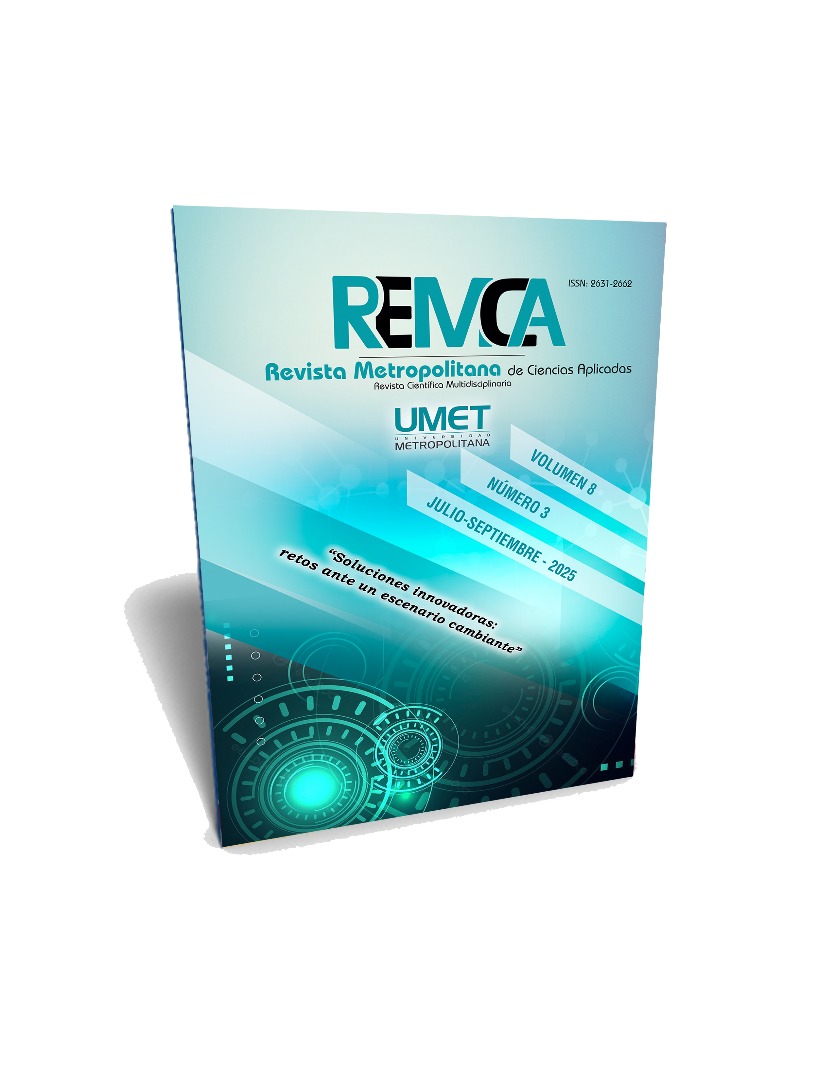Protección patrimonial de niños y adolescentes ecuatorianos: marco normativo y aplicación del procedimiento voluntario
DOI:
https://doi.org/10.62452/vera8d41Keywords:
Voluntary procedure, alienation of minors' property, legal capacity of children and adolescents, judicial authorization, best interests of the childAbstract
This study analyzes the voluntary procedure for the disposal of children's and adolescents' assets in Ecuador, based on the current regulatory framework. Ecuadorian regulations establish that minors have limited legal capacity, which prevents them from entering into acts of property disposition without the intervention of a legal representative. The objective of this research is to examine the scope and application of the voluntary procedure in these cases, with special emphasis on the protection of the child's best interests and the right to be heard. A qualitative and analytical approach was used based on a review of relevant regulations, doctrine, and jurisprudence. The results show that the General Organic Code of Processes (COGEP) regulates this procedure by requiring prior judicial authorization and convening a hearing to evaluate the appropriateness of the transaction. However, in practice, shortcomings are observed in the application of the right to be heard and in the appointment of guardians ad litem when there are potential conflicts of interest. It is concluded that, while the regulations provide an adequate protection framework, their implementation presents gaps that may affect the property rights of children and adolescents. It is necessary to strengthen the application of child protection principles through greater rigor in the judicial evaluation of these cases, ensuring the effective participation of minors in proceedings that affect their property, and promoting an interpretation that safeguards the best interests of the child.
Downloads
References
Devis Echandía, H. (2009). Nociones generales de derecho procesal civil. Temis.
Ecuador. Asamblea Nacional Constituyente. (2008). Constitución de la República del Ecuador. Registro Oficial N. 449. https://www.oas.org/juridico/pdfs/mesicic4_ecu_const.pdf
Ecuador. Asamblea Nacional. (2015). Código Orgánico General de Procesos. Registro Oficial Suplemento N. 506. https://www.telecomunicaciones.gob.ec/wp-content/uploads/2018/09/Codigo-Org%C3%A1nico-General-de-Procesos.pdf
Ecuador. Congreso Nacional. (2003). Código Orgánico de la Niñez y Adolescencia. Registro Oficial N. 737. https://www.igualdad.gob.ec/wp-content/uploads/downloads/2017/11/codigo_ninezyadolescencia.pdf
Ecuador. Congreso Nacional. (2005a). Código de Trabajo. Registro Oficial Suplemento N. 167. https://www.ces.gob.ec/lotaip/2020/Junio/Literal_a2/C%C3%B3digo%20del%20Trabajo.pdf
Ecuador. Congreso Nacional. (2005b). Código Civil. (Codificación No. 2005010). https://faolex.fao.org/docs/pdf/ecu205110.pdf
Ecuador. Corte Nacional de Justicia. (1999). Resolución No. 405-99, Primera Sala de lo Civil y Mercantil. Registro Oficial No. 273. https://www.cortenacional.gob.ec/cnj/images/pdf/sentencias/sala_civil/2015/463-2013.pdf
Ecuador. Corte Nacional de Justicia. (2014). Sentencia No. 43-2012. https://www.cortenacional.gob.ec/cnj/images/pdf/sentencias/sala_civil /2014 /43 -2012.pdf
Ecuador. Pleno de la Comisión Legislativa y de Fiscalización. (2009). Código Orgánico de la Función Judicial. Registro Oficial Suplemento N. 544. https://www.oas.org/ext/Portals/33/Files/Member-States/Ecu_intro_text_esp_3.pdf
Galindo Cardona, A., & García Larriva, H. (2015). Relación entre el Código Orgánico General de Procesos y el procedimiento arbitral. Revista Ecuatoriana De Arbitraje, 6, 51 – 81. https://doi.org/10.18272/rea.i6.3545
Guerrero, D. (2020). Nueva concepción normativa procesal del divorcio en la legislación ecuatoriana. (Trabajo de titulación). Universidad del Azuay.
Lema, B. (2017). El juicio de cuentas en relación al derecho de dominio o propiedad según el Código Orgánico General de Procesos. Novedades Jurídicas – Revista Digital. https://www.novedadesjuridicas.com.ec/el-juicio-de-cuentas-en-relacion-al-derecho-de-dominio-o-propiedad-segun-el-codigo-organico-general-de-procesos/
Molina Mora, J. F., Atencio González, R. E., & Moreno Arvelo, P. M. (2022). La Constitución Ecuatoriana y los principios democráticos. Universidad Y Sociedad, 14(S3), 487–497. https://rus.ucf.edu.cu/index.php/rus/article/view/2978
Montero Aroca, J. (2016). EL derecho jurisdiccional. Tirant lo Blanch.
Moranchel, M. (2017). Compendio de derecho romano. Universidad Autónoma Metropolitana.
Naranjo, L. (2002). Análisis del tratamiento que la Corte Suprema ha dado a la falta de legitimatio ad causam ya la falta de legitimatio ad processum. (Trabajo de titulación). Pontificia Universidad Católica del Ecuador.
Organización de las Naciones Unidas. (1989). Convención sobre los Derechos del Niño. https://www.un.org/es/events/childrenday/pdf/derechos.pdf
Piñuel, J. (2002). Epistemología, metodología y técnicas del análisis de contenido. Sociolinguistic studies, 3(1), 1-42. https://www.ucm.es/data/cont/docs/268-2013-07-29-Pinuel_Raigada_AnalisisContenido_2002_EstudiosSociolinguisticaUVigo.pdf
Tantaleán, R. (2016). Tipología de las investigaciones jurídicas. Derecho y cambio social, 13(43). https://dialnet.unirioja.es/descarga/articulo/5456267.pdf
Downloads
Published
Issue
Section
License
Copyright (c) 2025 Ingrid Joselyne Díaz-Basurto, Génesis Karolina Robles-Zambrano, Cinthia Mariela Cajas-Párraga (Autor/a)

This work is licensed under a Creative Commons Attribution-NonCommercial-ShareAlike 4.0 International License.
Authors who publish in Revista Metropolitana de Ciencias Aplicadas (REMCA), agree to the following terms:
1. Copyright
Authors retain unrestricted copyright to their work. Authors grant the journal the right of first publication. To this end, they assign the journal non-exclusive exploitation rights (reproduction, distribution, public communication, and transformation). Authors may enter into additional agreements for the non-exclusive distribution of the version of the work published in the journal, provided that acknowledgment of its initial publication in this journal is given.
© The authors.
2. License
The articles are published in the journal under the Creative Commons Attribution-NonCommercial-ShareAlike 4.0 International License (CC BY-NC-SA 4.0). The terms can be found at: https://creativecommons.org/licenses/by-nc-sa/4.0/deed.en
This license allows:
- Sharing: Copying and redistributing the material in any medium or format.
- Adapting: Remixing, transforming, and building upon the material.
Under the following terms:
- Attribution: You must give appropriate credit, provide a link to the license, and indicate if any changes were made. You may do this in any reasonable manner, but not in any way that suggests the licensor endorses or sponsors your use.
- NonCommercial: You may not use the material for commercial purposes.
- ShareAlike: If you remix, transform, or build upon the material, you must distribute your creation under the same license as the original work.
There are no additional restrictions. You may not apply legal terms or technological measures that legally restrict others from doing anything the license permits.




